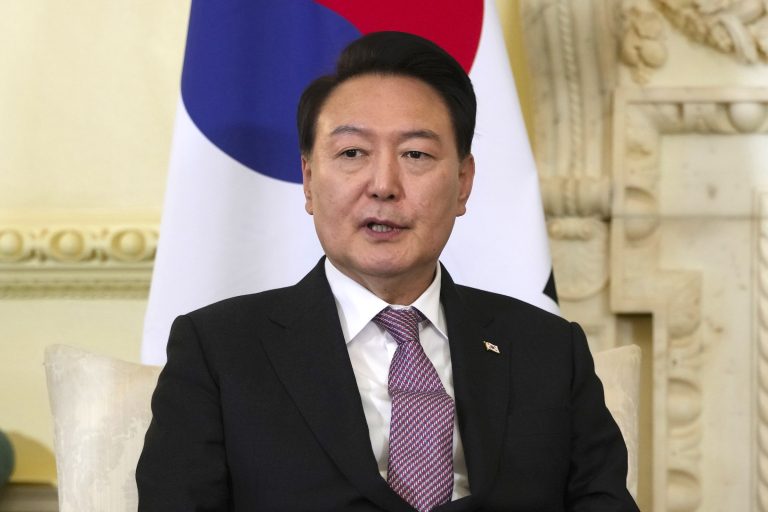With the Beijing Winter Olympics scheduled to begin in 2 weeks, China’s “Zero-COVID” policies have escalated around the country, prompting protests across the metropolitan cities of Tianjin, Shenzhen and Xi’an.
Out-of-town residents protesting dwindling supplies and lack of food
On Jan. 20, the Chinese Health Care Commission announced 66 new confirmed cases on the 19th, including 14 cases in Tianjin — a port city of approximately 14 million about a two-hour drive from Beijing.
A video posted on social media on Jan. 17 shows migrant workers in Tianjin breaking out in a mass protest because they had no access to food. The footage shows a man wearing a black top on the roof of a vehicle, shouting: “Migrant people have no money and no food. I just want to have food!”
A large number of police and armed forces then rushed to the scene to suppress and arrest the man, sparking public outrage.
Posts on Twitter showed that when authorities distributed relief supplies in Tianjin’s Xiqing District, Dashi Town, Li Zhuangzi Village, Chilong Xin Park, Chilong Lan Park and other communities, only Tianjin locals were given the supplies. Non-locals who rented houses in the community were not given anything, resulting in the protests that night.
In China, having official residence (hukou) in a city is crucial when it comes to receiving welfare and other privileges. Hundreds of millions of Chinese, predominantly from rural areas, live and work in cities, but do not have urban hukou.
Success
You are now signed up for our newsletter
Success
Check your email to complete sign up
One of the tweets read that migrants trapped in Xiqing District rioted against the government as dwindling supplies reached dangerously low levels. The person seen standing on top of the car and protesting was arrested and may be convicted of “picking fights and provoking trouble” or “subverting state power,” the tweet said.
Although local officials did not make any comment in regards to the protests, some residents reported an ease in restrictions the day after the protests took place.
Shenzhen residents: no more lockdowns
In addition to Tianjin, Shenzhen’s Luohu District also broke out in protest on Jan. 19.
According to an online video, after being dissatisfied with the government’s extreme confinement and control measures, some villagers in Shenzhen’s Tianxin Village spontaneously took to the streets to protest. A young man was seen being arrested on the spot as local officials sent many armed police officers and vehicles to the scene.
The tweet reads: “Seen in Shenzhen Zhuanggang Tianxin Village: a mass protest broke out! Crowds of people were seen storming police blockades, demanding the end of lockdowns. Some people were seen being arrested and taken away.”
In addition, on Jan. 20, a large number of people came out of their homes to protest and demonstrate in Shenzhen’s Zhuanggang Qingyun Garden over being unable to go to work due to the prolonged confinement.
Officials are now refusing to respond to reports of public protests in several parts of Shenzhen.
Protests broke out in Xi’an against high-priced vegetables
Since being subjected to a citywide lockdown on Dec. 22 last year, there have been reports of pregnant women miscarrying and patients with heart conditions in Xi’an dying after being unable to seek immediate medical attention. Truck drivers have also reported being unable to return home after long-haul drives and local residents were stuck at home for weeks without food.
READ MORE:
Residents of Xi’an Resort to Bartering for Food Amid Lockdown
Although local officials have repeatedly stressed that there are “sufficient food supplies,” according to netizens, a conflict broke out in the Huacheng International District of Yanta after some properties prevented residents from leaving to buy basic supplies.
It was reported that two citizens were arrested by police for opposing the high price of vegetables sold in community shops. Homeowners were outraged by the news and gathered outside the police station to demand their release.
The tweet read: Another mass incident broke out today in Xi’an’s Yanta District. Huacheng International District was closed for 35 days without food and only high-priced vegetables are being sold by the property management! The owners went downstairs to discuss their claims and were beaten up by police! Homeowners united in resistance, shouting “release”!
In response to the incident, Xi’an officials have not issued any response. One user said in the comments, “I heard a while ago that when the Chinese people have no food to eat, that’s when they wake up, and it’s true.”














